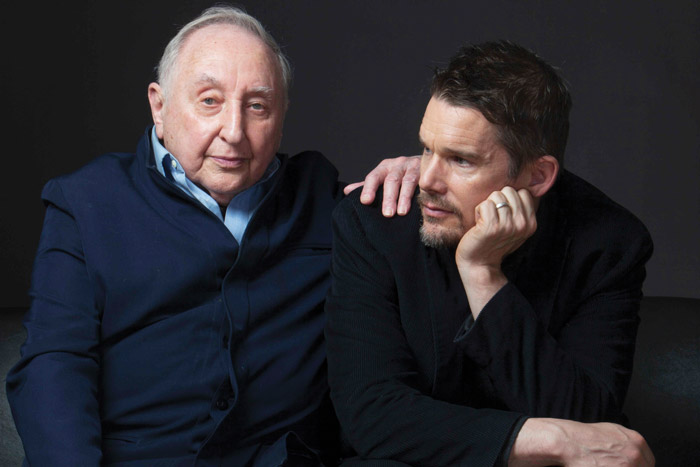Seymour: An Introduction, the new documentary from actor/director Ethan Hawke, focuses on pianist Seymour Bernstein, but it’s really an in-depth look at the search for greatness. Without taking attention away from Bernstein, who’s given a treatment bordering on hagiographic—and deservedly so—the film becomes a guide to those seeking answers to life’s questions, and it’s difficult to imagine him wanting it any other way.
The approach makes sense given how the film came to fruition, which Hawke explains at the start of a performance by Bernstein, snippets of which are interspersed throughout. Despite a storied career which included four Oscar nominations and a series of critically acclaimed collaborations with director Richard Linklater, the actor found himself questioning the direction and purpose of his art. His friend Anthony Zito (credited on Seymour as an executive producer) invited him over for dinner, and it was there that he met Bernstein.
Bernstein, as the film tells us, was a successful concert pianist whose professional credits included a hugely acclaimed performance at Alice Tully Hall. Despite his achievements as a performer, he quit his career at the age of 50 after a quiet farewell concert in order to teach full-time. He’d had enough of the stress and excess which too often accompany a performance career, and he sought to live a simpler life.
Hawke gives the viewer a few more of Bernstein’s biographical details, including a particularly moving section where he recounts his time serving in the Korean War, but the emphasis is more on his approach to music, education, and life. He shows Bernstein working with a range of students in master class and private lesson settings, which give a hint of his impressive abilities as a teacher.
His educational talents are far from limited to musical instruction, as the film continuously reminds us. Hawke decided to make the film due to the invaluable role Bernstein ended up playing in his own life as a mentor, and both musicians and non-musicians alike will undoubtedly find lessons to learn from him. His wise words about music almost always apply to any art form, and even the most music-specific of his comments suggest a dedication to his craft from which anyone looking for a role model can learn.
Seymour also functions as a guide for the confused; it’s far from a pedantic bore. Bernstein himself has a funny, charismatic, and engaging presence, and Hawke wisely stays out of his way for most of the film. He lets us see Bernstein interact with students, peers, and admirers from various disciplines, and that’s more than enough to keep the film compelling for the course of its brief, but powerful 84-minute running time.
The range of settings in which we witness him isn’t organized with any discernible logic (aside from ending the film with Bernstein’s performance of Schumann’s “Fantasie” at the concert organized by Hawke), but it doesn’t take away from the film’s impact. Images and tales from the pianist’s youth are interspersed with footage of him practicing seemingly at random, but it all makes sense together somehow. The collage-like style provides a kaleidoscope view of Bernstein, and it’s effective for evoking his eternally sunny, youthful nature without cordoning off the different periods in his life.
Bernstein’s jovial but firm approach to music education is a helpful corrective to the one suggested by last year’s Whiplash. In that film, the dictatorial band director Fletcher berates his students into success with questionable results. By contrast, Bernstein is no less demanding, but his strictness appears to come from a genuine desire for the student to succeed, rather than Fletcher’s apparent hatred. His vast array of disciples learn far more than any of the budding musicians in Whiplash did, and, for 84 minutes, viewers of Seymour become his pupils, too.









